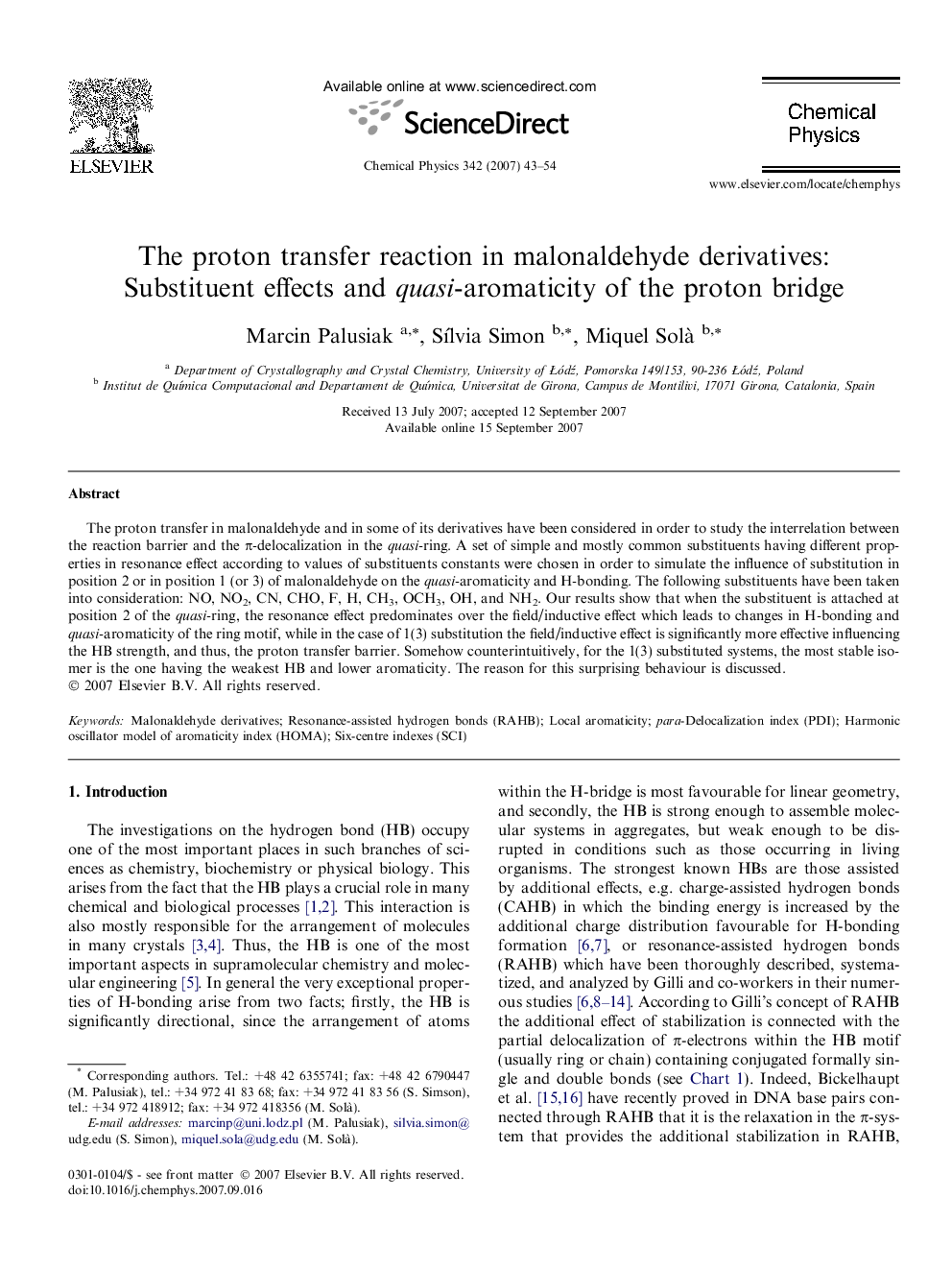| Article ID | Journal | Published Year | Pages | File Type |
|---|---|---|---|---|
| 5376125 | Chemical Physics | 2007 | 12 Pages |
Abstract
The proton transfer in malonaldehyde and in some of its derivatives have been considered in order to study the interrelation between the reaction barrier and the Ï-delocalization in the quasi-ring. A set of simple and mostly common substituents having different properties in resonance effect according to values of substituents constants were chosen in order to simulate the influence of substitution in position 2 or in position 1 (or 3) of malonaldehyde on the quasi-aromaticity and H-bonding. The following substituents have been taken into consideration: NO, NO2, CN, CHO, F, H, CH3, OCH3, OH, and NH2. Our results show that when the substituent is attached at position 2 of the quasi-ring, the resonance effect predominates over the field/inductive effect which leads to changes in H-bonding and quasi-aromaticity of the ring motif, while in the case of 1(3) substitution the field/inductive effect is significantly more effective influencing the HB strength, and thus, the proton transfer barrier. Somehow counterintuitively, for the 1(3) substituted systems, the most stable isomer is the one having the weakest HB and lower aromaticity. The reason for this surprising behaviour is discussed.
Related Topics
Physical Sciences and Engineering
Chemistry
Physical and Theoretical Chemistry
Authors
Marcin Palusiak, SÃlvia Simon, Miquel Solà ,
